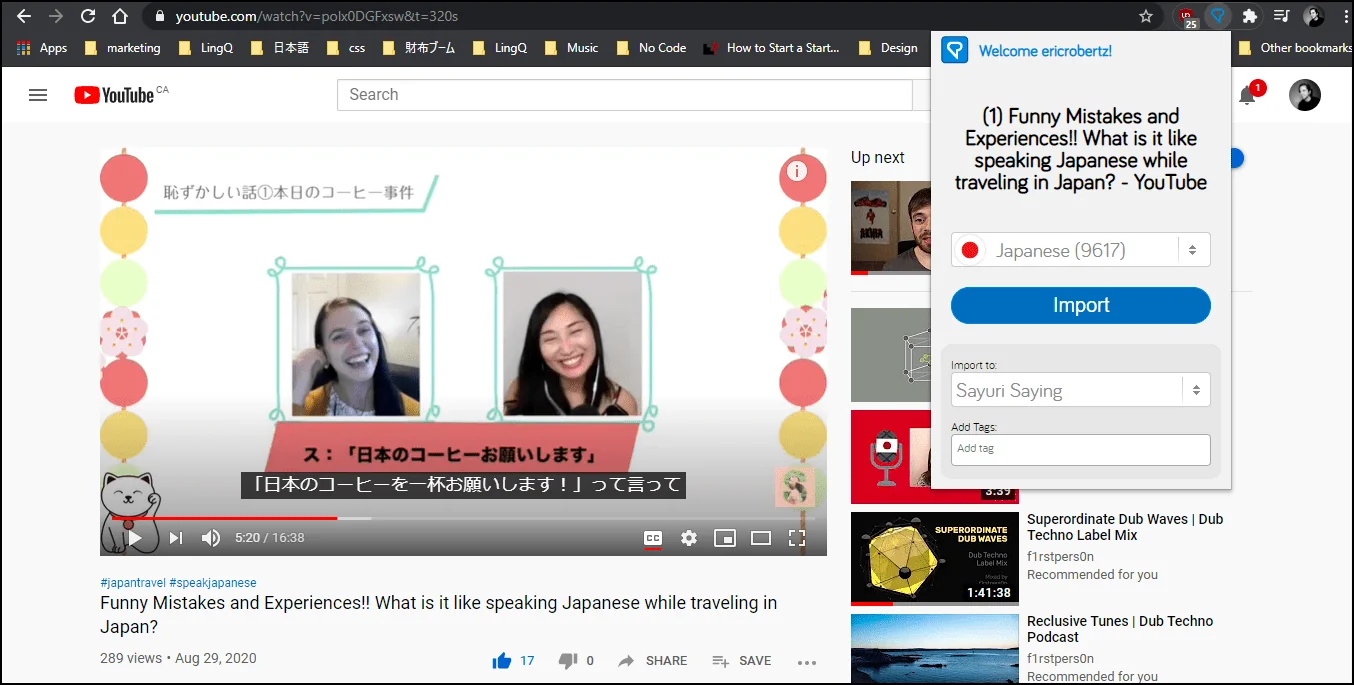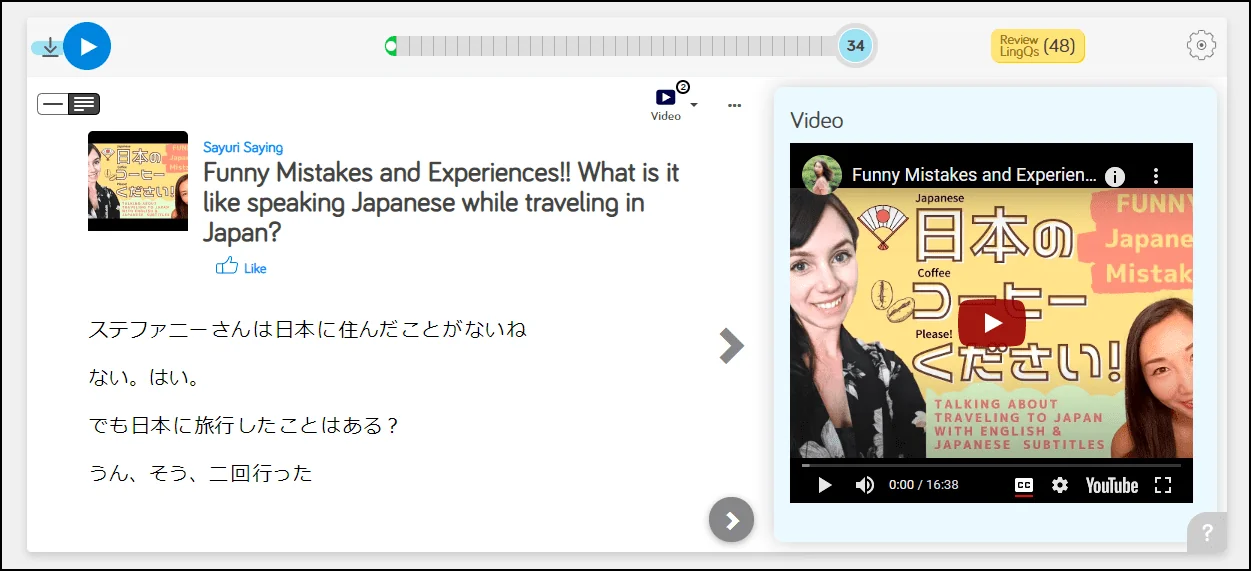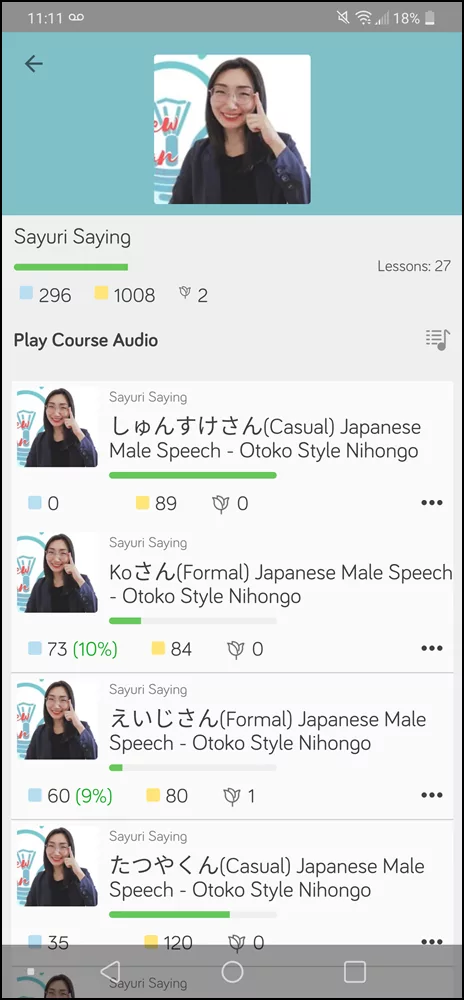How to Learn Japanese with YouTube
When you google “What’s the hardest language to learn”, more often than not, Japanese will be near the top of the list. But is Japanese hard to learn? I don’t think so.
When it comes to learning a new language, the more resources in your target language that you have access to, the easier it is to study.
As someone who’s been learning Japanese, the amount of resources available are endless. Whether you’re a beginner, intermediate, or advanced Japanese learner, you’ll find something that suits your needs.
I’ve talked about learning Japanese with anime in the past but today, I want to show you how to learn Japanese with YouTube.
The best videos come with manually created closed captions. Unlike YouTube’s auto-generated closed captions, these are accurate and written by native Japanese speakers. This allows you to actively listen and read, which will help you become fluent faster.
Without further ado, I’m going to go over the best YouTube videos for learning Japanese. These videos are fun, high quality, and of course, come with transcripts.
Learn Japanese with These YouTube Channels
Miku Real Japanese (Beginner, Intermediate)
Miku’s a cheerful Japanese teacher who resides in Osaka and creates videos about her life in Japan. She also interviews foreigners and locals to discuss the cultural differences between Japan and the outside world. Miku’s content is perfect for beginner learners. It’s fun, entertaining, and informative.
Sayuri Saying (Beginner, Intermediate)
Sayuri creates content that revolves around everyday life in Japan. Things like work, eating out, shopping, and so on. Sayuri is an excellent teacher and often brings her friends on as guests to talk about a variety of topics. Her content is meant for upper-beginner, intermediate Japanese learners. However, if you’re a complete beginner, I’d still recommend checking out her channel as a way for you to start getting used to the language.
English with Makiko (intermediate)
Although Makiko’s channel is meant for Japanese who are learning English, it’s still an excellent resource for Japanese learners as well. You’ll be able to pick up a variety of interesting phrases that you can use to impress your Japanese friends, such as slang, idioms, and more. Thanks to Makiko’s transcripts, you’ll also be able to improve your reading comprehension too!
Tokyo Veg Life (Advanced)
Tokyo Veg Life is a YouTube run by Natsuki, who shares her love for vegan recipes and yoga. She offers yoga tutorials and morning routines to help you carry on throughout the day. She’s also interviewed Steve Kaufmann too.
Tobalog (Advanced)
If tech and office gear are your things then Tobalog is the perfect channel for you. Find out what Japanese creatives are using for their work as they meticulously go through each piece of hardware and software in their bags and home offices. Tablog’s videos are extremely well-shot and visually appealing.
TOKYO SLOW LIFE / RUI HIGUCHI (Advanced)
YouTuber Rui takes the hustle and bustle out of Tokyo and documents his hobbies such as painting, carpentry, and design. The videos are well-shot and Rui has a knack for detail. A great channel for experiencing the lighter side of the world’s busiest city.
How to Import Japanese YouTube Videos into LingQ
The channels above are excellent resources for learning Japanese. However, YouTube isn’t the most user-friendly when it comes to studying a new language. There’s no way to look up words and phrases, save your vocabulary, build audio-only playlists, organize your content, and so on.
That’s why there’s LingQ.
Import your favourite content and create interactive lessons to help you learn Japanese with YouTube.
Here’s how:
Download the LingQ extension (Chrome, Safari, or Firefox) for your browser and head over to YouTube. Once you’ve selected a video, simply click the LingQ extension and hit the import button. Within seconds, LingQ will import the video’s content (audio, transcript) and create an interactive lesson that you can read and listen to. It’s that easy.

LingQ will turn your favorite content into easy-to-read interactive lessons that you can study on your desktop and mobile device.

Keep all your favorite Japanese content stored in one place, easily look up new words, save vocabulary, and review.

Lastly, if you can’t find content on YouTube, there are a host of other resources that can be imported into LingQ, such as Netflix, news articles, and videos from streaming sites. Check out our guide to importing content into LingQ for more information.
Enjoyed this post? Check out polyglot and LingQ cofounder Steve Kaufmann’s YouTube video for some tips for learning Japanese!


